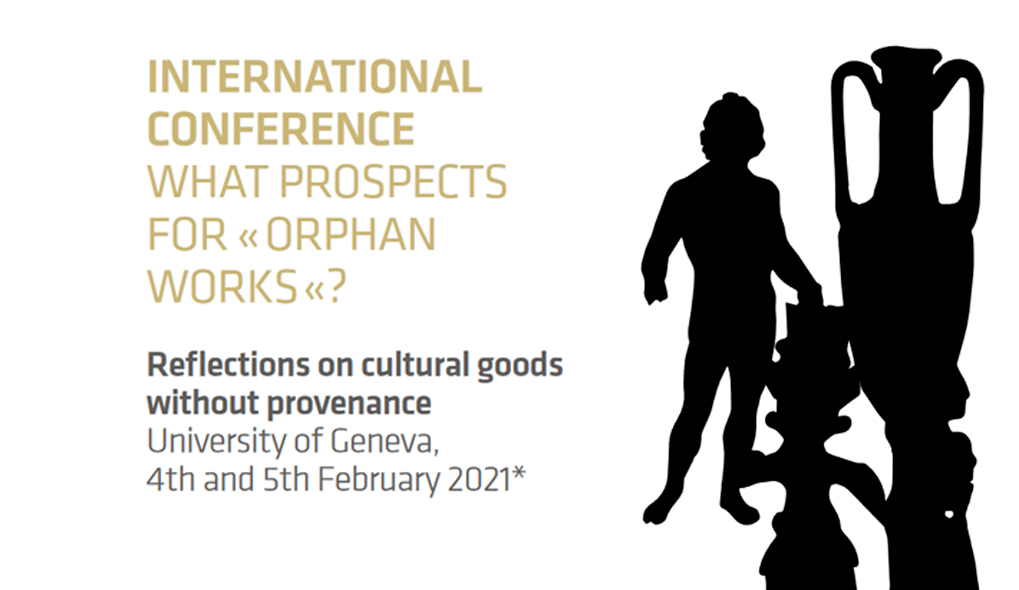What to do with objects whose provenance we are unable to determine? How should we deal with those works for which no material proof, no archive can attest to the history, chain of possession or traceability? It is with these questions in mind that the Fondation Gandur pour l’art, the University of Geneva and the International Institute for the Unification of Private Law (UNIDROIT) organised the international colloquium What future for “orphan works”? – Reflections on cultural goods without provenance, on 4 and 5 February 2021.
The concept of orphan works is relatively new and this colloquium first set out to define it, with the intervention of eminent experts such as Marina Schneider (UNIDROIT), Marc-André Renold (Centre du droit de l’art) and Isabelle Tassignon (Fondation Gandur pour l’art). It was notably illustrated by the example of a painting by Gustave Courbet, bequeathed to the canton of Jura by a private collector. After several years of multidisciplinary research, it was established that the painting was not a fake, but that no provenance could be established; the work was therefore without history. This starting point made it possible to ask many questions about the way in which the works of art circulate through time and space, and about the need to preserve or search for traces of their history of circulation.
Then, the question of inventories and archives of private collections from the 19th century to the present day was raised, to which many art historians gave their answers. Pioneering work on the question of the identification of works of art and the reconstruction of their history was presented. In addition, the philosophical and ethical aspects that have guided the evolution of art collections, but also the return and restitution of illicitly acquired works of art, were explored.
The symposium continued with a central question: what to do with works without pedigrees? Researchers in law and ethnography, as well as museum professionals and collectors, provided answers and avenues of reflection to solve this thorny problem. The themes of provenance research and the current framework governing the sale of goods within the art market were then addressed. The different presentations made it possible to clarify that the search for provenance is a science in its own right, which is well-known in the history of art, but might be a relatively new perspective from a criminological point of view. In the continuation of the discussions of the conference, the question of technologies allowing a precise identification of cultural goods was raised, as well as their limitations.
The event then addressed a crucial concept: that of the patrimonialisation of private collections, which could constitute a solution for the “regularisation” of orphan works. In particular, the idea of developing a collective management of goods belonging to private collections through the establishment of a private foundation was evoked, as was the experience of building up the collection of the National Museum of Beirut, between the 1920s and 1950s, which suffers from a lack of written documentation and which probably originated mostly from private collections.
This dense two-day colloquium closed with presentations by stakeholders of the international cooperation in the fight against trafficking in cultural property, including representatives of ICOM, INTERPOL and the World Customs Organization. The need to clean up the art market by establishing a precise provenance for each orphan work was discussed. Although it may be difficult to fully satisfy this requirement, the speakers discussed in particular the need to link the concept of orphan works to that of the exercise of due diligence, in order to enable a more systematic search for the provenance of works.
If you would like to see this conference in its entirety, the various presentations and debates have been filmed and are available here.

